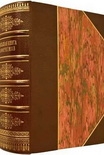Helgoland, Rovelli, Erica [black authors fiction txt] 📗

Book online «Helgoland, Rovelli, Erica [black authors fiction txt] 📗». Author Rovelli, Erica
The construction of the theory is rewarded by an unparalleled shower of Nobel Prizes. Einstein gets the Nobel in 1921 for having clarified the photoelectric effect by introducing quanta of light; Bohr in 1922 for the rules on the structure of the atom. In 1929, de Broglie is awarded the prize for the idea of waves of matter. In 1932, it is Heisenberg, “for the creation of quantum mechanics,” and in 1933, Schrödinger and Dirac, for “new discoveries” in atomic theory. Pauli receives the prize in 1945 for technical contributions to the theory. Born receives it in 1954 for having understood the role of probability (he did so much more besides). The only one to be overlooked is Pascual Jordan, despite the fact that Einstein had (correctly) nominated Heisenberg, Born and Jordan as the true originators of the theory. But Jordan had shown too much loyalty to Nazi Germany, and those defeated in war do not receive credit.35
Remaining faithful to Werner Heisenberg’s seminal insight on Helgoland, the theory doesn’t tell us where to find any one particle of matter when we are not looking at it. It only speaks about the probability of finding it at one point if we observe it.
But what does a particle care if we are observing it or not? The most effective and powerful scientific theory is an enigma.
PART TWO
II
A CURIOUS BESTIARY OF EXTREME IDEAS
In which strange quantum phenomena are described, and various scientists and philosophers seek to understand them, each in their own way.
SUPERPOSITIONS
I hesitated a lot before deciding which academic subject to pursue. I opted for physics at the very last moment. On the day of enrollment at the University of Bologna (it was not yet possible to enroll online), there was a series of queues of different lengths for different programs, and I was helped in my decision by the fact that the physics queue was the shortest.
What attracted me to physics was the suspicion that beyond the deadly boredom of the subject taught in high school, behind the stupidity of all those exercises with springs, levers and rolling balls, there was a genuine curiosity to understand the nature of reality. A curiosity that resonated with my own restless, adolescent desire to try everything: to read, to know and to see everything, to travel everywhere—to experience as many countries, environments, girls, books, as much music and as many ideas as possible . . .
Adolescence is the time when the networks of neurons in the brain suddenly rearrange themselves. Everything seems intense, everything is alluring, everything is disorienting. I had come out of it confused and full of questions. I wanted to understand the nature of things. I wanted to know how our thinking manages to comprehend this nature. What is reality? What is thinking? What is this “I” that does the thinking?
It was this extreme, intense adolescent curiosity that pushed me to seek out what lights science—the great New Knowledge of our time—might offer . . . Not that I was expecting all the answers, much less definitive ones. But how could one ignore what humankind had managed to comprehend, over the past two centuries, about the detailed structure of things?
I found the study of classical physics mildly entertaining. Its concision gave it elegance. It was more coherent and definitely made more sense than the little formulas I’d had to rote-learn at school. Studying Einstein’s discoveries on space and time filled me with amazement and exhilaration. My heart was beating faster.
But it was during my first encounter with the quanta that colored lights started firing up in my brain. I felt that I was getting to touch the incandescent matter of reality. A place where our assumptions and prejudices about reality are thrown into question.
My encounter with quantum theory began at the deep end: one-on-one with Paul Dirac’s seminal book. It happened like this: at Bologna, I had taken Professor Fano’s course on “Mathematical Methods for Physics.” “Methods,” that is, for us. The course required a topic to be developed individually in some depth and then presented to the class. I had chosen a small area that is now studied by everyone graduating in physics, but which at the time was not part of the curriculum: group theory. I went to speak to Professor Fano to ask him about what my presentation should contain. His answer was: “The fundamentals of group theory and its application to quantum theory.” I sheepishly mentioned the fact that I had not yet taken any course on “quantum theory” and knew literally nothing about it. “Oh, really?” he said. “Then you’d better get studying quick.”
He was joking.
But I didn’t realize that he was joking.
I bought Dirac’s book, in the gray Boringhieri edition. It smelled good. (I always sniff books before buying them: the smell of a book is decisive.) I shut myself up at home and studied it for a month. I also bought four other books and studied those as well.36
One of the most beautiful months I have ever experienced.
And the source of questions that have stayed with me for a lifetime. Questions which, after many years, much reading, countless discussions and doubts and uncertainties have led to the writing of this book.
In this chapter I delve into the strangeness of the quantum world. I describe a concrete phenomenon which captures that strangeness: a phenomenon that I have had the chance to observe in person. It is subtle, but it illustrates the crucial point. Then I list some of the ideas most discussed today that try to make sense of this strangeness.
I leave to the chapter after this one the idea





Comments (0)